 It’s coming up to a year since Alter Ego was being completed, and finally SBS have committed to a screening date. It’s showing next Monday, 14th December at 11.25pm. More on the screening time later, but first:
It’s coming up to a year since Alter Ego was being completed, and finally SBS have committed to a screening date. It’s showing next Monday, 14th December at 11.25pm. More on the screening time later, but first:
The Mini-Review
I had the opportunity to watch Alter Ego a few months back. Directed by Shelley Matulick, this documentary takes a very close look at Second Life from the perspective of four people. Three of them are Australian, the other from the United States. All have very different stories but their commonality is the role Second Life has played in bringing them closer to other people. I think there’ll be some very different reactions to the portrayal of the subjects. It’s fair to say each have had significant challenges in their lives, with Second Life being a central activity for each.
There are a few aspects of the story that could easily be used by virtual worlds detractors who speak in terms of “get a real life” – that would totally miss the point as what this documentary shows in a stark way is the mixed bag of opportunities and challenges virtual environments present. Overall, Alter Ego is an engaging, well-made documentary that firmly illustrates the role virtual worlds are playing in modern life. Veteran Second Life residents will find areas to criticise – it’s far from a full picture painted, but like any powerful documentary it’s the power of individual stories that can make the difference and Alter Ego certainly achieves that.
Although SBS deserve some kudos for screening Alter Ego, I can’t for the life of me understand why it was relegated to late night just before Christmas. This is a quality Australian documentary that has appeal well beyond those who are involved with Second Life – surely a repeat of Inspector Rex could have made way for a documentary?
Wolfie’s perspective
Over the past three years I’ve gotten to know one of the documentary subjects, Wolfie Rankin. One of the first things I did after watching Alter Ego was to contact Wolfie and ask for his thoughts on the documentary experience, which you can read below:
I had no idea what I was in for, I thought a crew would come around and Shelley would interview me a bit and that’d be it, but it took a lot longer than I realised. Shelley would drop in now and then just to record me on voice, using a digital recorder… and then later she bought the crew. I think they were here about eight or more times, gathering bits and pieces.
The interesting thing for the technically minded was that no tapes were used, everything either went to hard drive or flash card, The High Definition camera which was used had two large flash cards in which it recorded about 20 minutes of footage which was then dumped to a laptop with a 1TB hard drive hanging off of it.
My house was an absolute mess, well I live alone, so if my house gets a bit messy, it doesn’t matter. So I cleaned up like mad and threw any excess stuff into the spare room and closed the door. What I didn’t realise was they’d bring a truck load of stuff, lighting and cables which had to go somewhere and ended up in the spare room too.
I hadn’t cleaned my bedroom or the bathroom either, so guess where they wanted to film, good grief. Oh yes, and the garden, which had been horribly neglected.
I used to be a keen gardener, but my parents were living with me then so we all had our own jobs to do, but now I live alone I find I have very little time for everything, and as everyone knows, I spend a long time each day on the computer. I’m thankful for Katie, my dog, who insists on about three daily walks or I wouldn’t get out quite as often.
My advice to anyone who might find themselves doing a doco, clean clean clean, inside and out. Although the funny thing was that all the scenes showing my house were mostly cut out. Marko, who was in the kitchen, cooking… in his rat suit, as you can see on Youtube. I watched the tape back and saw a kitchen which hadn’t been that clean for years. I have been trying to maintain that ever since.
Marko really wishes he could do a sort of kids cooking show, and I think it’d be great to see him do this, though how he manages to do anything much in that suit, I don’t know.
In another scene which didn’t make it (you can view it on YouTube here), Marko and I went to the local deli. I loved that, it was a really funny experience. Marko got into his rat suit “Rattus”, and then we all walked out into the street, Marko as Rattus, Shelley, Bart (The sound guy), Zach (our Cameraman) and myself… and got into Shelley’s not so roomy car, with Marko in the front passenger seat. If he’d been driving, that would have looked even funnier. Shelley drove, and us three guys were cramped up in the back with all the equipment. We got to the deli about five minutes later and all piled out, then Marko and I went to the deli and went through a routine where we’d buy cheese (of course) and other items which we’d take home and eat while talking about furries and so on later that night. Marko would point at various cheeses and I’d buy them, he asked me to get blue vein, and the strange thing was he didn’t actually like it, I asked him why he wanted it, and he said Rattus wanted it, not him. How do you respond to that logic?
Marko thought Bart looked cute, but he doesn’t want anyone to know so you’d better leave this bit out. 😉 There’s a nice scene in the deli of Rattus being stroked by Bart, but then Shelley hugged him and I was walking around the shops holding Rattus’ hand. I remember something about a woman gently telling Rattus to behave and be a good boy, and Rattus nodding. There was something really warm about that, a shame we didn’t get that on tape, it was beautiful.
Rattus also went into the Bakers Delight a few doors down from the deli, and hugged all the girls who were working there, it’s interesting to see the effect of a fursuit on people, many don’t look, they feel shy or embarrassed, but others love it, and I’m talking about grown people, kids are generally really keen on the idea, but the adults who have this wonderful positive response to it, it’s a lovely thing to see.
Last year I had no heater, and we were filming during winter. The house was frozen, and the doors were usually wide open because the crew kept coming in and going out a lot. So I was usually in a beanie and coat, and shelley whipped my beanie off before each scene which explains the wayward hair 🙂
Shelley picked Katie and I up to film a scene in the forest, she lives up near where Puffing Billy is and drove all the way to Footscray to pick us up. We got to her home, and what amazed me was her driveway is almost vertical, the steepest driveway I’ve ever seen… anyway, Katie and I went to this place in the forest which Shelley thought looked like a European pine forest. Well we were planning the shot when Katie stuck her nose into the dead pine needles and pulled out this hideous lump of meaty something. I know that baits are used up there so I feared the worst, even if it wasn’t a “proper” bait, it could have been left by one of those nuts who hate dogs and want to poison them, so we raced to the vet with Katie, and she was looked at and was fine, but she’d scared all of us. Jamie who composed the music for the doco was driving and we were almost hit by another car on the way, and Shelleys little boy was hot and upset. So we didn’t end up with any film at all that day which was a real shame.
The forest scene was difficult, I don’t have the fastest connection, and that sim lagged like mad. I couldn’t walk anywhere, and Shelley had to TP me to her most of the time. It’s a wonder she got the footage that she did. The video of me howling was added to the scene digitally later on.
It was suggested that we talk about sex, which I think was appropriate, but I suggested that if we must show genitalia that we show the furry stuff, because there have been other docos where human ones were mentioned, so perhaps we should try this to be different. But the funny thing was that because we had to compress things down and have one thing lead neatly into another, the film kind of gave the impression that I hang out at furry penis vendors, hoping to meet newbies and take them to strange parties in the forest, which was supposedly my Rezday.
It was a bit of a shame that I couldn’t show the kind of rezday I would normally have, a party with friends at the Kookaburra pub, with friends like Kath and Ryu, Simon, Gumby, Vermus, Quadrapop and Lowell, of course… and the performers we usually have, like Komuso and Jaggpro, but it was thought that the forest would be more visually pleasing, which it is.
We wanted a lot more people in the shots but those who we were after were usually offline when Shelley was filming, which we found really frustrating.
I didn’t like the last scene in the doco, I think what I said should have been edited better than that, and I told Shelley. I don’t know if the version which goes to air will still be the same, but I hope they can change it. While trying to explain how I felt, I found myself flip-flopping with ideas which sounded really weird and confusing, but the visuals on that final scene are really beautiful. so just absorb the music and visuals and mentally filter my voice out, please!
What I did was just kind of waffle on about ideas that popped into my head, knowing they’d be edited later, or hoping may have been a better word. I don’t think I do a good job explaining myself when there’s a mic or camera in front of me, I feel that if I can sit and write, then I am more likely to get the idea across much better… but I gave it a go.
I thought they did a really good job on the Second Life visuals, they were almost as good as what we saw in the CSI episode earlier in the year.
One of my favourite scenes in the doco is the one where Alf was laying down with his keyboard on his lap and his LCD screen hanging from an angle, He’d drilled a hole in it and tied a bit of string through it, unbelievable!
Marko is my very dear friend, who I met online around 1996 I think, and we’ve been the best of friends ever since. And he’s been here for me whenever anything bad happened, he’d come to see me, and I’m very very grateful for that, we’re soulmates, I’m sure. We met on a group he’d set up called Ozfurry, which is still around but Marko has gone onto other things.
Marko would like to do a serious doco on the furry culture, and I think he’d be the perfect one for it. He knows a lot about the scene, the people and has travelled to the US a number of times to see friends and visit furcons.
Shelley, our director, is this wonderful, very good looking, intelligent woman, who aims to produce more docos in future, under her own steam. She’s studying more about film production at Swinbourne uni at the moment. She told me that she doesn’t want to be in front of the camera, she mostly wants the people in her films to tell their own story, which I think is fine, but I’m trying to pursuade her to go out the front and be in the film too, I think she’d so a fine job of it.
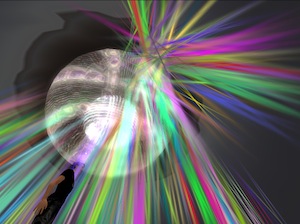 The latest round of winners in the University of Western Australia’s 3D Art and Design Challenge have been announced. The momentum of this competition continues to grow, with a huge number of entries and the addition of Linden Lab CEO Mark Kingdon to the final judging panel.
The latest round of winners in the University of Western Australia’s 3D Art and Design Challenge have been announced. The momentum of this competition continues to grow, with a huge number of entries and the addition of Linden Lab CEO Mark Kingdon to the final judging panel.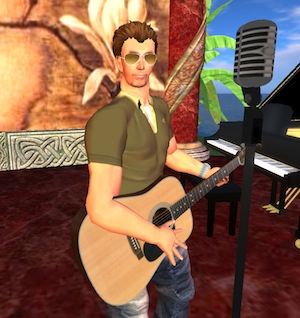
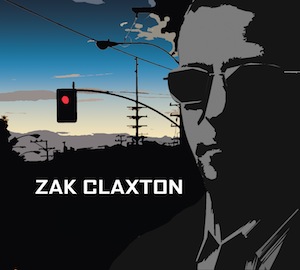 Zak: I tend to create music for the sake of the music, as opposed to ulterior motives like fame or fortune. I can say for sure that I still have a lot of music inside of me that has yet to emerge. I’ve begun writing songs for a second solo album, which I intend to start working on in early 2010. But on an immediate basis, my self-titled debut album is just coming out now, so I have some stuff to do to help promote it. In that regard, I will be doing some live shows in real life, and we’re making an effort to get terrestrial radio airplay here in the USA in addition to the Internet radio play we get on stations like IndieSpectrum Radio and SL Live Radio. While I’m not fooling myself into thinking my album will be some massive pop hit, I still want to do the things that will at least give it a chance to get heard, so the current focus is in that regard. I’m working closely with Kat on this stuff, since we’re partnering in a record label called Frothy Music to do the release of my album.
Zak: I tend to create music for the sake of the music, as opposed to ulterior motives like fame or fortune. I can say for sure that I still have a lot of music inside of me that has yet to emerge. I’ve begun writing songs for a second solo album, which I intend to start working on in early 2010. But on an immediate basis, my self-titled debut album is just coming out now, so I have some stuff to do to help promote it. In that regard, I will be doing some live shows in real life, and we’re making an effort to get terrestrial radio airplay here in the USA in addition to the Internet radio play we get on stations like IndieSpectrum Radio and SL Live Radio. While I’m not fooling myself into thinking my album will be some massive pop hit, I still want to do the things that will at least give it a chance to get heard, so the current focus is in that regard. I’m working closely with Kat on this stuff, since we’re partnering in a record label called Frothy Music to do the release of my album. Zak: Lots and lots of mistakes to avoid. First and foremost, check your ego at the door, as Quincy Jones once famously said. I’ve seen a number of musicians come into SL thinking they should be the hot ticket from day one, since they have a bit of real life experience as a musician. But as I mentioned earlier, there’s actually a pretty deep talent pool in SL, and like any music scene you’re trying to break into, you have some dues to pay in terms of getting recognized.
Zak: Lots and lots of mistakes to avoid. First and foremost, check your ego at the door, as Quincy Jones once famously said. I’ve seen a number of musicians come into SL thinking they should be the hot ticket from day one, since they have a bit of real life experience as a musician. But as I mentioned earlier, there’s actually a pretty deep talent pool in SL, and like any music scene you’re trying to break into, you have some dues to pay in terms of getting recognized.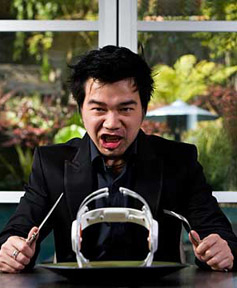 I’ve been following the progress of
I’ve been following the progress of 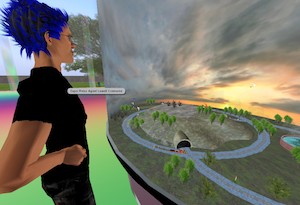 1. The University of Western Australia’s
1. The University of Western Australia’s
Recent Comments